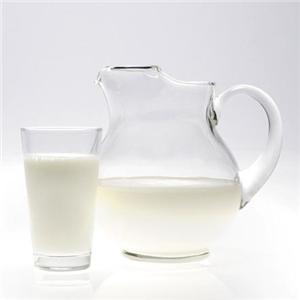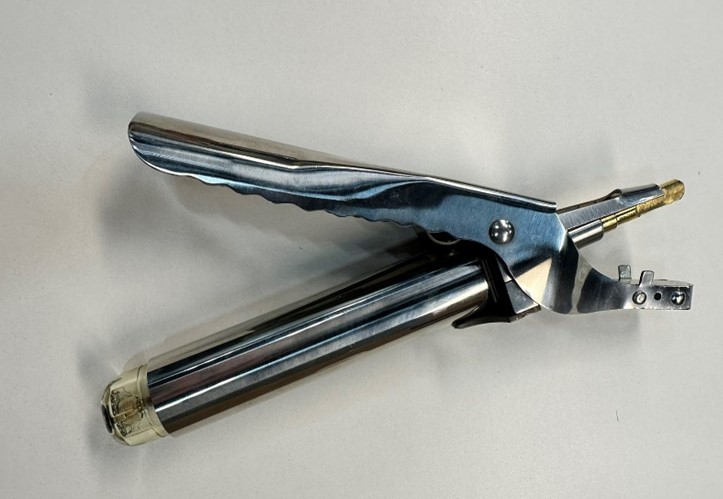Homemade Mulberry Nutrient Blocks for Goats Doubled Milk Milk

Goat mulberry can be used in many ways, and all of them will benefit
The mulberry (or mulberry) grows throughout the world in a variety of climates from temperate to tropical. Since mulberry leaves are rich in nitrogen, sulfur and minerals, they are used as supplementary feed to increase animal productivity.
Fresh leaf biomass yields are often in the order of 25-30 tons per hectare of plantations per year, with a pruning interval of about 9-10 weeks. Mulberry leaves have a high protein content (18-25% in dry matter) and help to reduce the cost of feeding goats, which need to consume 4 to 7% of dry matter per 40 kg of body weight.
While growing mulberries in grazing areas seems to be the easiest way, this approach requires patience and building cages around the young mulberries. Otherwise, the goats will completely eat the fragile seedlings, having dined on the leaves along with the bark.
Therefore, in different countries, scientists are considering other options for the supply of alternative feed. For example, in Vietnam, experiments were carried out on the ensiling of mulberry leaves. The leaves of the local mulberry were collected in different places in central Vietnam for 2.5 months. They were cut into small pieces (2 to 3 cm long) and dried in the sun.
Rice bran 5% and molasses 5% were used as additives in the preparation of silage. Then, 54 laboratory samples of silage with additives, weighing 1500 g, were compared with a control mulberry leaf silage prepared without any additional ingredients for efficiency in feeding goats. In general, all mulberry silos were compared to grass hay.
Groups of five local goats with an average body weight of 17.3 kg received different diets: natural grass hay; hay plus plus 250 g of mulberry silage per day; hay plus 500 g of mulberry silage per day; hay plus 750 g/day mulberry silage and a group receiving only mulberry silage.
Water and SALT were available to all animals. Feeding was carried out 4 times a day at 8, 11, 14 and 17 hours.
Each period lasted 16 days, of which 10 days were for adaptation, 5 days for data collection, and 16 days for sampling of ruminal fluid.
Goats consumed more feed in the grass hay group and less when mulberry silage was the only dietary component. At the same time, there were no differences in the digestibility of dry matter for rations in which the level of mulberry silage varied from zero to 100%, completely replacing grass hay.
Importantly, there was a curvilinear increase in N excretion retention with increasing levels of mulberry silage.
In the end, the scientists concluded that mulberry leaves could be satisfactorily ensiled without the need for additives such as molasses or rice bran, with good results.
In Pakistan, they decided to use not only leaves, but also mulberry berries.
Chitral, the northernmost district of the Khyber Pakhtunkhwa province of the Islamic Republic of Pakistan, is traditionally considered a goat-breeding region. Since only about 18% of the land in the highlands of Chitral is suitable for agricultural cultivation, the inhabitants are heavily dependent on livestock, mainly goats, for their livelihood.
Typically, livestock in the area are malnourished due to reduced forage supply in deteriorating grazing land. Local livestock feed resources in Chitral include grazing (78.1%), crop residues (20.76%), fodder crops (0.81%) and grain bran (0.32%).
The unsustainable supply of nutrients caused by extreme weather has significantly reduced livestock productivity. Feed is scarce during the long winters, from November to April, when the animals are fully fed on a stable ration of hay and crop residues.
Concentrated additives are expensive and inaccessible to poor farmers. Molasses and urea feed blocks, although important for the feeding situation in Chitral as a strategic supplement, cannot be prepared locally due to the lack of molasses in the area. The high cost of transporting forage blocks from the plains is an additional factor in the difficulty. Therefore, Pakistani researchers have developed a technology for preparing multi-component nutrition blocks with mulberry fruits so that farmers can make cold feed for horned pets with their own hands.
A total of six different combinations of ingredients were tested to obtain blocks of the desired hardness. They took both fresh and dried berries.
Fresh mulberries containing more than 85% water were first ground to a paste, then urea was slowly added until completely dissolved in the paste. Mulberry fruits have enough moisture and no additional water is needed. After that, other ingredients (wheat bran, dried alfalfa leaves, clay) were added and thoroughly mixed.
After adding wheat bran or dried alfalfa leaves, the mixture turned into a dough, which was placed in a wooden mold (15 × 15 × 10 cm).
After pressing, the mold was removed and the blocks were left in the shade to dry and harden over the next 48 hours. The wheat bran mixture was the best option, as the excess alfalfa leaves did not allow the mixture to harden.
In the second case, dried mulberry fruits were suspended in an equivalent amount of water and boiled for about 10 minutes with continuous stirring, as a result of which the mixture turned into a viscous liquid, almost similar in consistency to molasses.
After the mixture was cooled to about 60 °C, urea was added and dissolved, followed by the rest of the ingredients (wheat bran, alfalfa leaves, clay).
The blocks reached the desired hardness in 24 hours. Soaking dried mulberries in unheated water overnight proved to be just as effective.
The technique of making blocks according to the recipe from fresh or dried mulberries was demonstrated to farmers (owners of goats and cows) and instructed. Household utensils were used to mix and shape small quantities, and sometimes the ingredients were mixed on a concrete floor with a shovel.
Farmers suggested the name of the technology - "kitori blocks". The word kitori in the local language of Chitrali means the fruit of the mulberry tree.
All farmers reported that the animals readily accepted the blocks and began to lick them from the first day, with the exception of a few picky (5%) who took 3-4 days to taste the supplement.
Daily intake was 150 to 300 g for cows and 50 to 100 g for goats. These figures were in line with expectations that a 3 kg block could last about 10 days for a cow and one month for a goat.
Replenishment of cows and bulls on Yamal farms
All farmers noted that the daily MILK production of animals consuming mulberry blocks increased by 30-50%, while their HEALTH improved markedly.
Read together with it:
- The Russian Ministry of Agriculture proposes extending veterinary regulations until 2032.The extension includes regulations for the prevention and eradication of diseases such as bradsot (Clostridium septicum), trichinosis (Trichinella), blackleg (Clostridium chauvoei), and porcine reproductive and respiratory syndrome (PRRS). The proposed changes stipulate the following new deadlines: for bradsot and trichinosis - from March 1, 2......
- He crawled to the icon with prayer. The true story of a man who overcame drug addiction.Alexander Ovchinnikov. Topic News. Our project's hero was a drug addict for many years. The thought that this was a dead end never left him, but his addiction proved stronger. One day, when he could no longer walk, he crawled to an icon in prayer. This became his first step toward a new life. Today, he heads a charity center that helps those who have given up hope and are unable to quit ALCOHOL an...
- Колумбия: При экспорте скота сертификация и прослеживаемость больше не являются необязательнымиВысококачественное животноводство, особенно при экспорте, требует сертификации и прослеживаемости. Это необходимые условия для выхода и конкуренции на многих международных рынках, а также на некоторых всё более требовательных внутренних рынках. Колумбийское животноводство не является исключением из этих правил, и, хотя предстоит ещё многое сделать, всё большее число ферм и компаний внедряют эти ме...
- Лучшие не только по молоку. Какие рекорды поставили в экспериментальной базе имени КотовскогоНовости темы Экспериментальная база имени Котовского известна далеко за пределами Узденщины благодаря высоким показателям, которых из года в год добиваются в хозяйстве. Лучшие результаты в районе агропредприятие показывает как по молоку и зерновым, так и по сахарной свекле. Страда этого года, проходившая не в самых простых погодных условиях, также стала рекордной. Хлеб – всему голова Весна 2.........



























































